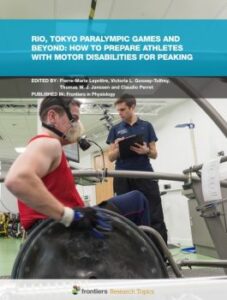Rio, Tokyo Paralympic Games and beyond: How to Prepare Athletes with Motor Disabilities for Peaking
The level of disabled athletes’ performance also improved to a point that, in the present days, sport news and world sport movements focus on the potential advantage of artificial limbs among amputees and their integration in able-bodied competitions. However, amputees do not represent the totality of disabled athletes. Most of them show other motor impairments due to different deficiencies (visual deficit, paraplegia, tetraplegia, cerebral palsy or else). These motor impairments induce typical functional and physiological responses to exercise (e.g., hyperthermia among athletes with tetraplegia) and thus alter their performance. Environmental conditions may also add adverse effects on exercise performance capacity. These should be taken into account in the preparation of Paralympic athletes for the pinnacle of their career, the Paralympic Games.
The objective of the present call for papers is to present new advances and research findings in the field of applied physiology, nutrition and biomechanics in exercise performance, within the context of studies that have implications for those athletes who are eligible to compete at a Paralympic level. We encourage authors to submit original research and review articles to this Research Topic. Potential themes include, but are not limited to, talent identification, testing and training methods, nutritional aspects and recovery modalities to optimize athletes’ performance. These may include aspects of the gross efficiency, cardiovascular and neuromuscular responses to exercise and training.
Frontiers Research Foundation, 2016
This e-book is freely available on the internet.




